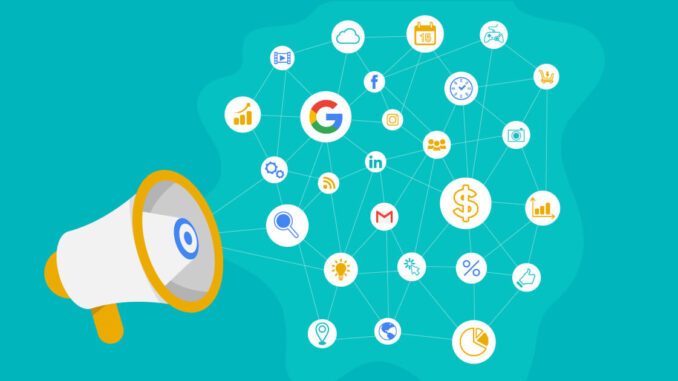
Hello and welcome to another edition of – our weekly column where we comb through some of the most relevant news and events that took place within the digital marketing landscape over the last week or so.
Let’s see what “November 2020: Week 3” edition brings us:
Alrighty then, let’s dive right in!
YouTube Sheds More Light Onto How its Recommendation Algorithm Works
New and interesting information has been made available for all those wondering what the main factors behind YouTube’s video recommendation algorithm are. Though a fair amount of data on this has already been known since 2016 when the recommendation algorithm was first introduced, the team members working on this machine learning AI component have now revealed more data on what can or cannot prevent your video content to have algorithm-based visibility boosts.
What we knew so far was that some of the factors involved clicks, watch time, likes/dislikes, comments, freshness, and upload frequency.
However, certain aspects of the algorithm are still unknown to us mere mortals, including factors like external traffic or if underperforming videos have any influence on how much future video content would be recommended and to whom. We also don’t know if and to what extent factors like inactive subscribers or too-frequent uploads affect the recommendation bias of the algorithm.
This is what YouTube’s team talks about in their new Q&A video on this topic:
For those who don’t have time to watch the entire video, here’s a short rundown:
Underperforming Videos – YouTube’s algorithm won’t diminish the visibility of your future videos just because you had a couple of underperforming ones. The platform doesn’t look at a channel as a whole, it rather looks at how the users are responding to a given video.
Too Many Uploads Per Day – You can upload as many videos as you want to your channel. As the number of received views depends on viewer preferences only, the recommendation algorithm will suggest a video as long as the users continue to watch it.
Inactive Subscribers – You don’t have to worry about inactive subscribers as this doesn’t factor in at all.
External Traffic – External traffic does have an influence to a certain extent and can help you boost the visibility of a video, but the long term performance depends mostly on how people respond to video content after clicking on it in their recommendations section.
Google Revamps the Webmasters Branding, New Name: “Google Search Central”
The company has decided to by giving it a new name, consolidating the blog, updating the branding, introducing a new Googlebot mascot, and Centralizing help information.
The new name is “Google Search Central” and the reason behind this change is outdatedness and decline in the use of the term Webmaster:
“A user experience study we ran revealed that very few web professionals identify themselves as webmasters anymore. They’re more likely to call themselves Search Engine Optimizer (SEO), online marketer, blogger, web developer, or site owner, but very few “webmasters.”
Google is also consolidating its blogs and centralizing help documentation to one site. The entire help documentation is moving onto a . This documentation includes content on how its search engine works, how it crawls and indexes pages, and other relevant search-related guidelines and topics.
Googlebot mascot fans will be happy to hear that the bot is getting a cute sidekick in a form of a Spider Robot.
(Image Source: Google)
The aforementioned changes are being rolled out as we speak.
Google Reveals a New Ranking Signal: Core Web Vitals (Starting in May 2021)
Google has officially confirmed that as of May 2021. The announced update will also combine existing UX-related signals.
We’re announcing that page experience ranking signals for Google Search will launch in May 2021. This will combine Core Web Vitals and previous UX-related signals.
— Google Search Central (@googlesearchc) November 10, 2020
Core Web Vitals, which were introduced earlier this year, are created for measuring the speed, responsiveness, and visual stability of a page. They are a part of the ‘Page Experience’ signal that combines them with the following:
The items listed below factor into the Core Web Vitals:
Largest Contentful Paint – Represents the time it takes for a page to load its main content. Ideal LCP is 2.5 seconds or below.
First Input Delay – Represents the time it takes for a page to become interactive. Ideally, 100 ms or less.
Cumulative Layout Shift – Represents the amount of unexpected layout shift of the visual-based content. Ideally, it is 0.1 or less.
First Big Update for Google Web Stories WordPress Plugin
Google gives its Web Stories plugin for WordPress its first major update with an emphasis on 3 rather handy new features.
The updated version provides website owners with the following new abilities:
These features should become available once you update the Web Stories plugin from the WordPress backend.
Disappearing Messages: Facebook Introduces Messenger’s New ‘Vanish Mode’
Though disappearing messages have kind of, well, disappeared themselves as a feature ever since Snapchat introduced them back in 2012, it appears there’s still the need for this type of fleeting communication within the user base.
Vanish mode has arrived in Messenger! Swipe up in a chat thread to enter. Swipe up to turn off. Some things aren’t meant to last. #vanishmode https://t.co/kq6icgAiW2 pic.twitter.com/xAFdgRB3g6
The company added this feature to WhatsApp a couple of weeks ago (WhatsApp messages can auto-erase after one week), and now Messenger is about to follow suit by introducing the new ‘Vanish Mode.’
Unlike WhatsApp, however, Messenger will make your messages disappear as soon as you leave the chat.
Admittedly, this concept isn’t completely new to Messenger as users can already set a time limit for their messages to self-destruct. This can be done in .
More information available in .
That would be all for this installment of Digital Marketing Week in Review by Four Dots. See you next week, until then – feel free to !

Leave a Reply